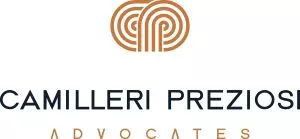- within Real Estate and Construction, Corporate/Commercial Law, Litigation and Mediation & Arbitration topic(s)
On the 30th of November 2021, as part of its commitment to effectively fight tax crimes, the FIAU released a factsheet on typologies and red flag indicators related to tax evasion and money laundering. One of the shortcomings identified by the FATF in their mutual evaluation of Malta concerned tax crimes and the lack of intelligence possessed by competent authorities and subject persons alike in catching or identifying tax offences. The guidance document hopes to increase subject persons knowledge on such tax crimes and enhance their ability to detect and ultimately report situations where they suspect that their services are or have been or are planned to be used to launder funds connected to serious tax evasion. It is expected that the FIAU will focus on more relevant cases that involve one or more of the following elements:
- Significant amounts;
- Complex structures;
- Multi-jurisdictional elements; and
- Other foreign elements.
The factsheet groups the typologies and red flags into five categories;
1. Customer's Identification Information
- Customer fails to disclose citizenship or tax residence, with non-disclosure pointing towards an attempt to avoid fiscal responsibilities; and
- No reasonable commercial justification for a natural person's residence to differ from their registered business;
2. Unusual or Suspicious Transactions
- Whilst the FIAU acknowledges that subject persons are not required to report transactions that exceed a certain threshold, subject persons at their discretion may put in place a certain threshold to detect unusual activities. Smurfing, the process of deliberately structuring transactions to avoid threshold, has been identified by the FIAU as an indicator of tax evasion – particularly in relation to cash-generating activities;
- Transactions outside known customer profile;
- Under or overvaluing goods and/or goods where the declared value on the invoices for these goods and/or services does not reflect the market value;
- Inconsistent withdrawals or deposits; and
- Circular or round-tripping transactions;
3. Entity Structure and Governance
- Rubber stamping, that being when a company's official carries out a transaction given by the beneficial owner without question;
- Governance of an entity lacks the skills, resources, or time commitment to undertake its function;
- Commingling of personal and business accounts;
- Complex structures without sufficient justification;
- Cash intensive businesses; and
- The absence of local footprint, such as bank accounts held with Maltese credit or financial institutions;
4. Source of Wealth & Source of Funds
- Customer fails to provide the requested information and/or supporting documentation in relation to SOW/SOF;
- Frequent amounts of deposits from unexplained sources;
- Indications that funds may have not been declared to tax authorities; and
- Doubts on the veracity or adequacy of supporting documentation provided;
5. Customer Interaction & Behaviour
- Customer shows questionable curiosity surrounding the subject person's regulatory reporting requirements;
- The subject person becomes aware that the customer has not settled his tax on time, failed to file tax returns or refuses to settle pending tax dues;
- The customer requests unreasonable levels of confidentiality;
- Customer is non-compliant with tax obligations for a number of years; and
- False statement or documents relating to tax
The guidance concludes with case study examples gathered from strategic analysis of suspicious transaction reports submitted by subject persons to the FIAU. Subject persons are reminded of their obligations to have internal and external reporting procedures in place that provide for the reporting of suspected or known instances of ML/FT. The FIAU reminds subject persons that although there is no minimum value threshold to report a transaction, resources should be better focused on cases that are likely to be of more significance to law enforcement. In this regard, subject persons should seek to increase their ability to detect and report serious cases of money laundering through tax evasion.
The content of this article is intended to provide a general guide to the subject matter. Specialist advice should be sought about your specific circumstances.



